Anatomy
The single score visualization is used with Performance Analytics indicators. These data sources provide additional data that enable you to compare a score to a target value and display the data trend. Indicators also let you add the sparkline subcomponent, which displays values over time, relative to a target value, in a simple graph.
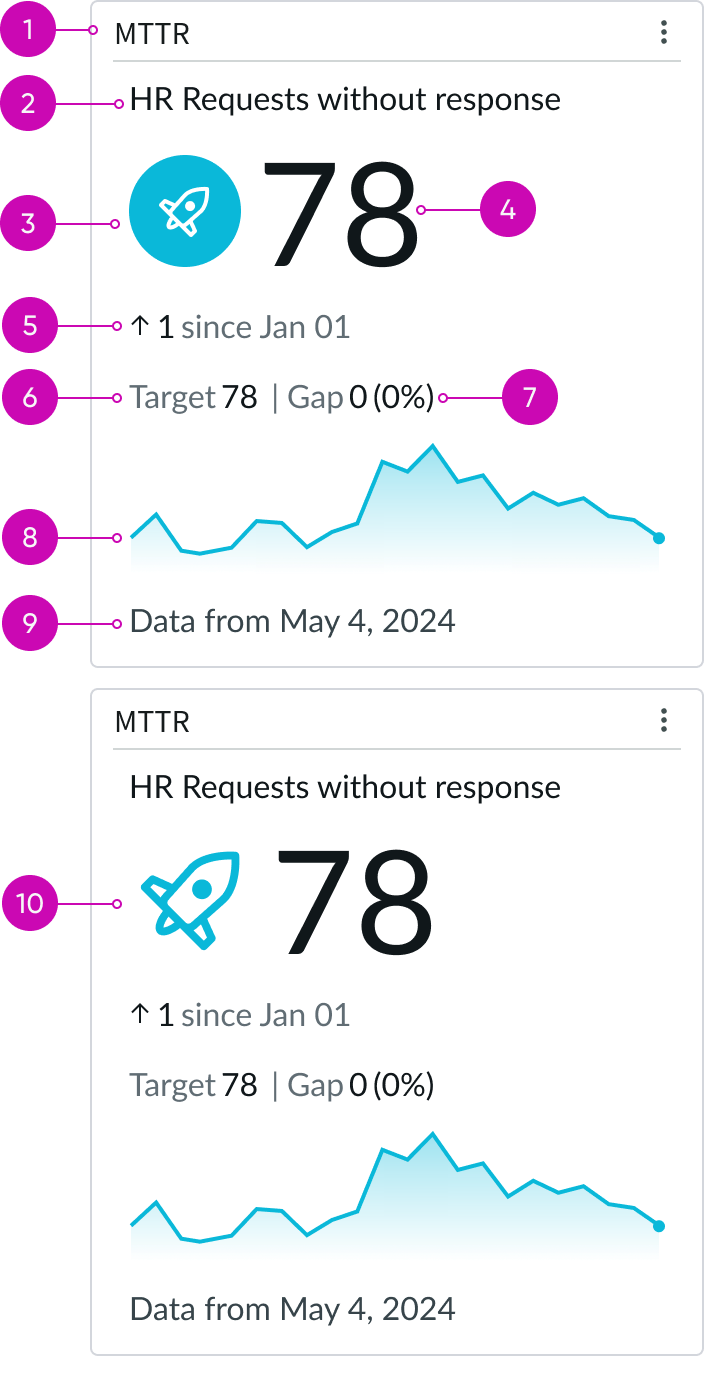
- Score header (optional): Can show title and separator line
- Metric label (optional): Identifies the specific data from the data source being displayed; only displays in the top of the score for PA widgets or indicators; displays in the top or bottom of the score for non-PA widgets
- Score icon (with background): Visual representation that shows the score performances
- Score: The current value of the data; updated at the last refresh
- Trend indicator: Shows the change in the data at the last snapshot; the arrow icon indicates whether the data is trending up or down
- Target: Desired value for the data
- Gap and Gap percentage: Difference between the target value and the actual value of the data in value count and percentage
- Sparkline graph (optional): Graph of the data over time, compared against the score and target values
- Last updated score date: When the score data was last updated; can be exact time or relative time - such as “just now”
- Score icon (without background): Visual representation that shows the score performances
Usage
Use a single score report in a dashboard so that users can quickly view developing data. Users can open record lists from a single score chart by selecting the score.
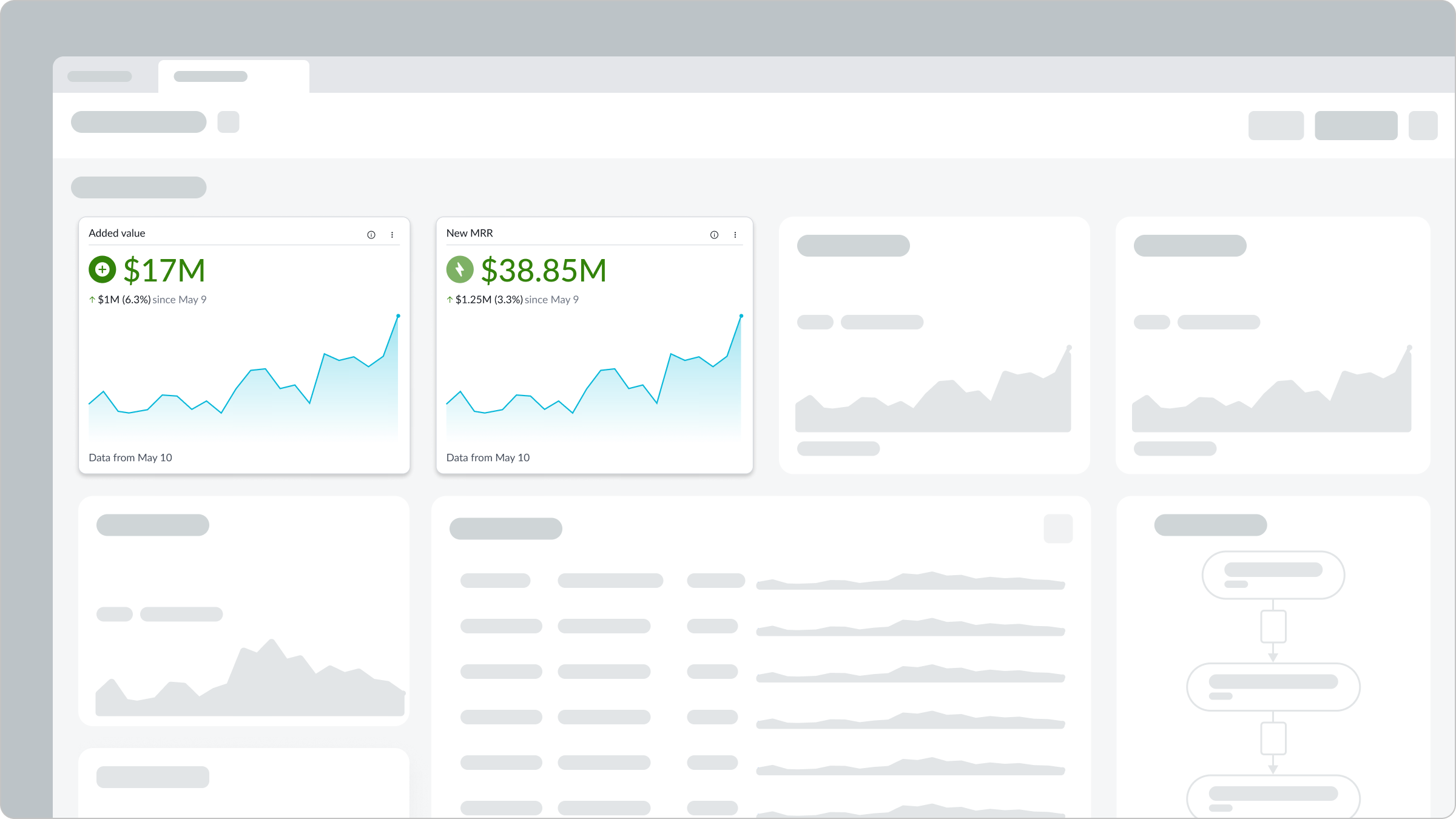
Configurations
Learn how to customize single score charts by configuring the available properties. Configuration has two categories: data and presentation.
Data source
You can select between 3 different data sources for your visualization: system data tables, preconfigured Performance Analytics indicators, and User Experience Analytics. If you are changing your data source, the option list provides suggestions based on previous selections and items that match your search.
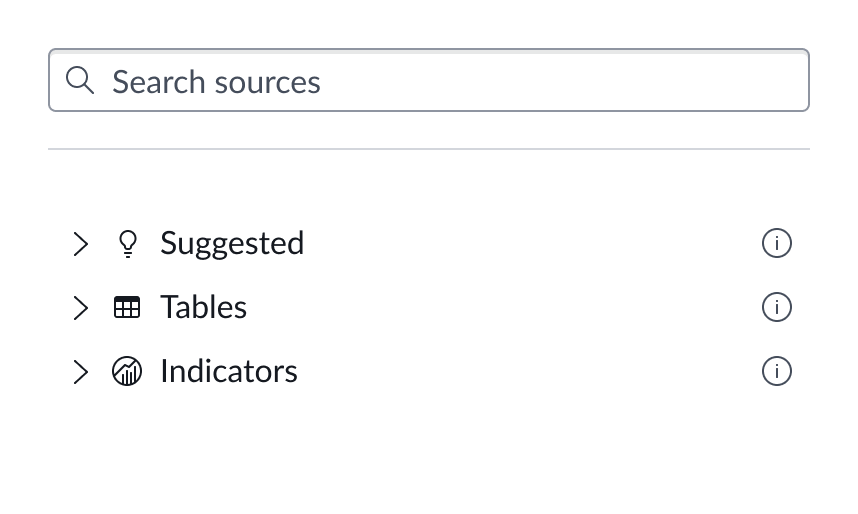
Tables
You can select any table from the system to use in your visualization and filter that data. When you apply a table as the data source, a preview list appears showing all available records in that table.
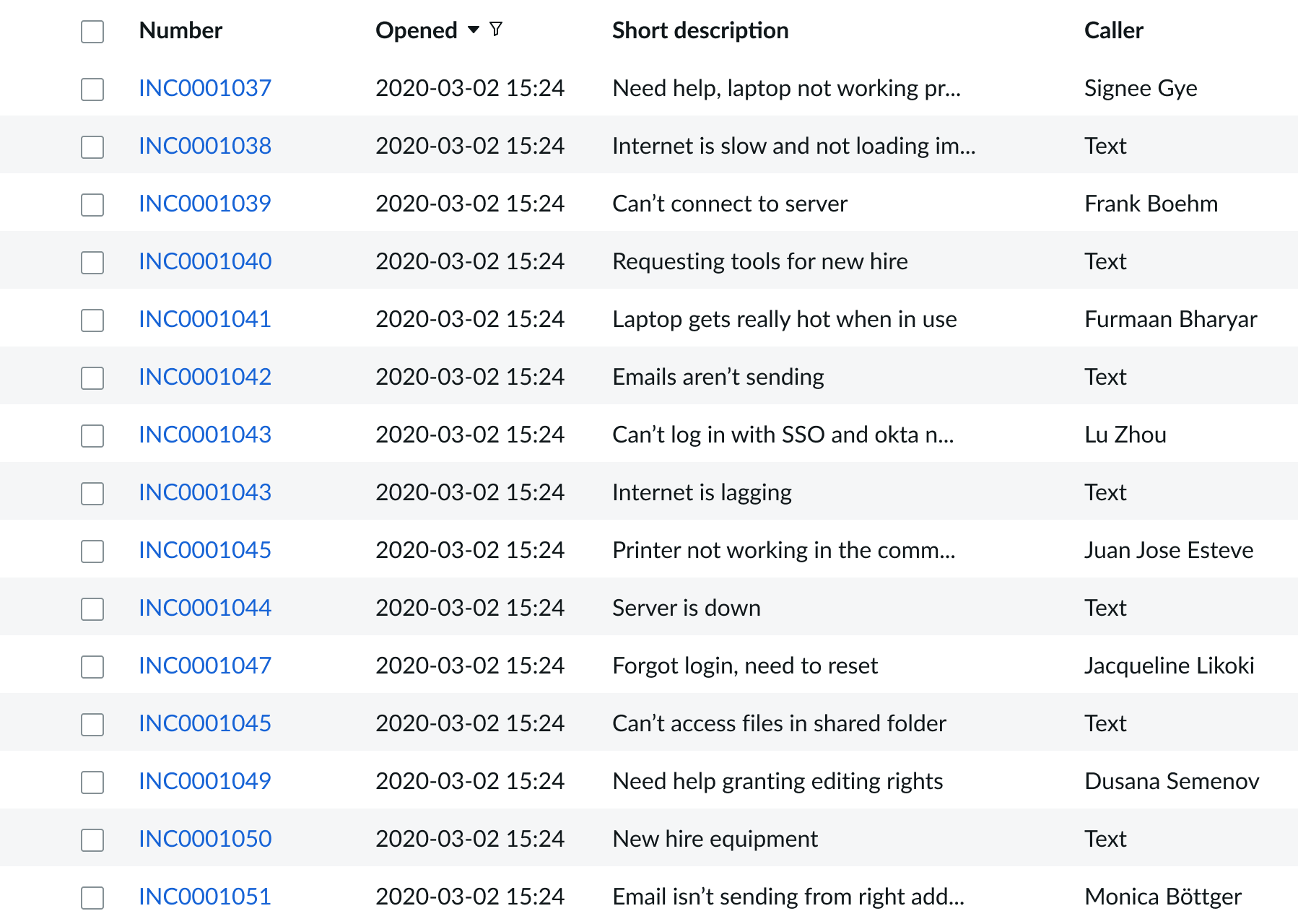
A condition builder above the list enables you to set filter conditions on the data before using it in your visualization. This is useful for limiting the data shown in the chart to only the data you need.
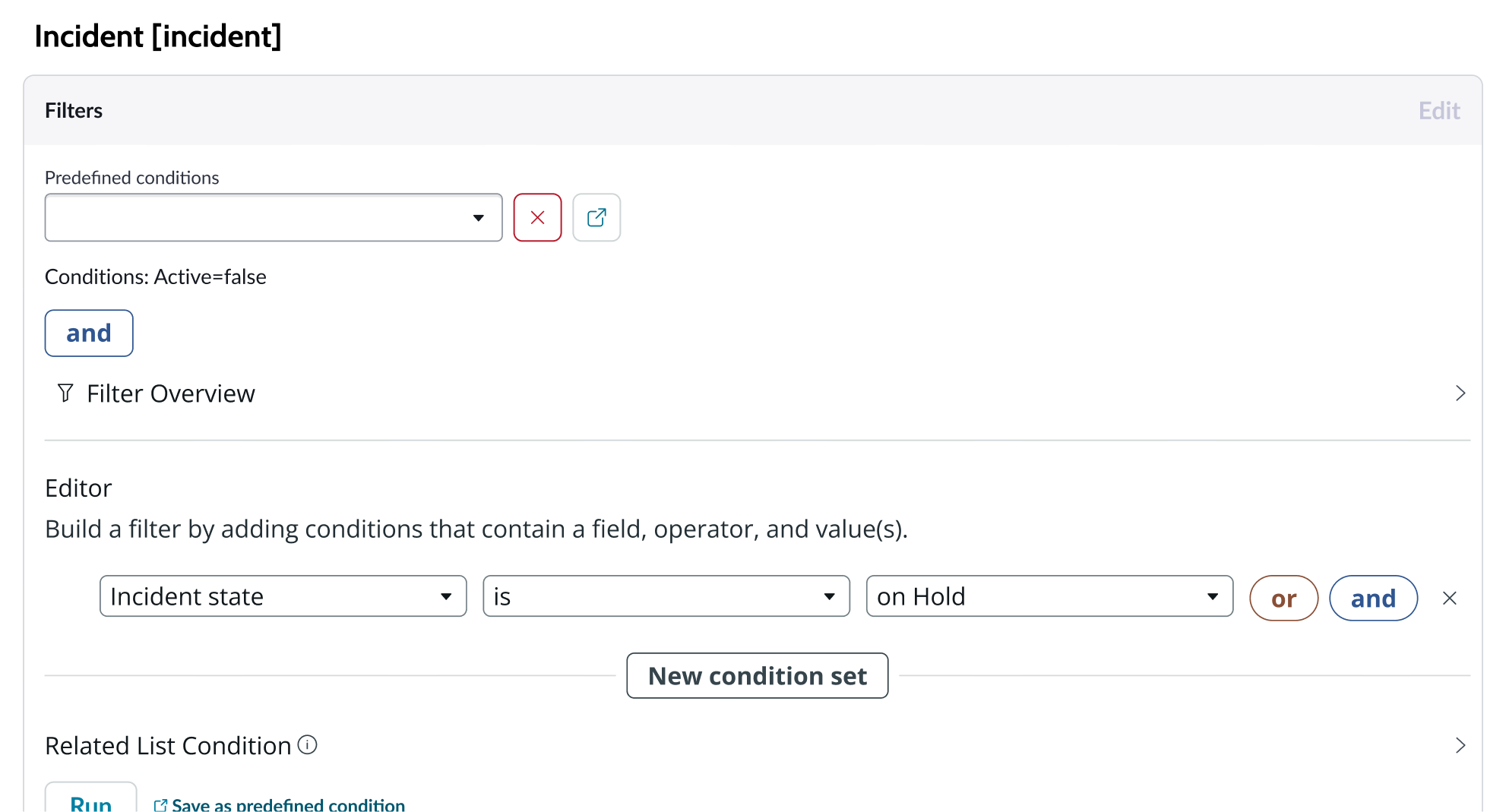
Indicators
Indicators are preconfigured business metrics that assess performance across attributes such as cost, quality, technical risk, investments, user satisfaction, and business value. Indicators are configured in the Performance Analytics application and reflect common measurements that users need. If breakdowns are defined for an indicator, you can apply filter conditions on those values.
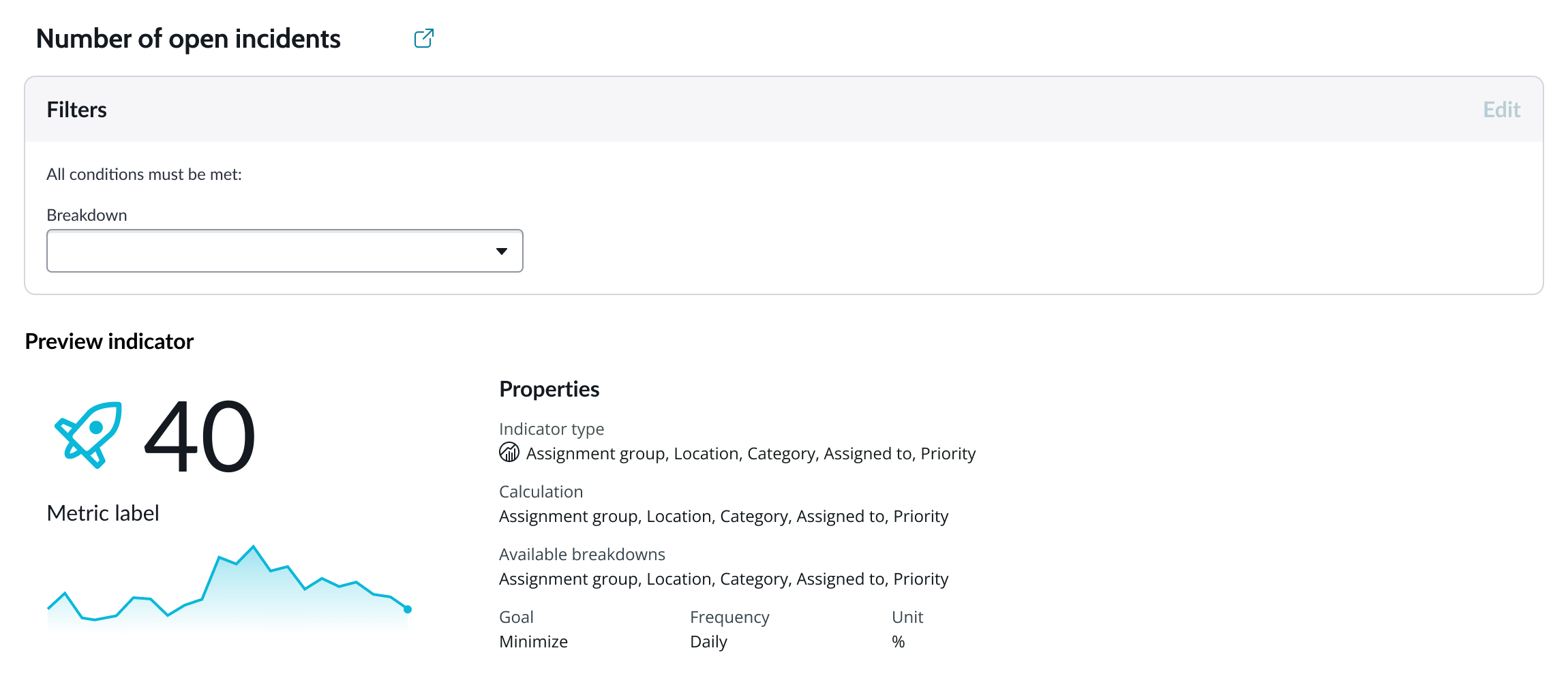
User Experience Analytics
Use User Experience Analytics to understand usage and adoption of your web and mobile applications.
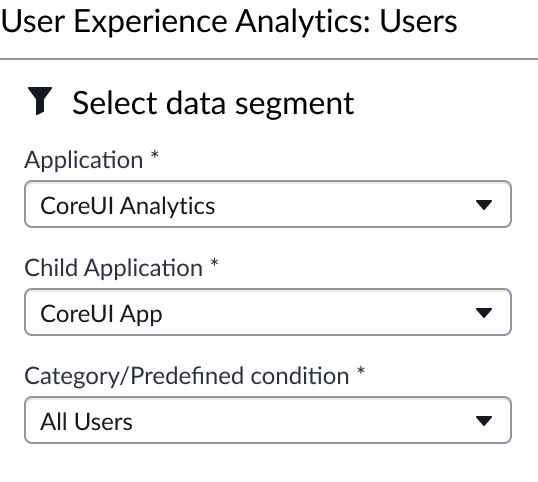
Data properties
Data properties selects and organizes the data you want your users to see from the source. Configuration options in UI Builder depend on whether you select table data or indicators. Some configurations for indicator data sources require that the indicator have breakdowns.
Metric selection
Select the specific data from the data source to display in the chart and the label that identifies it. Select an aggregation type from the dropdown list. You can select a specific field from the data source table to display in the chart. If you leave the field empty, all fields are used, depending on any filtering conditions you applied when you selected the data source.
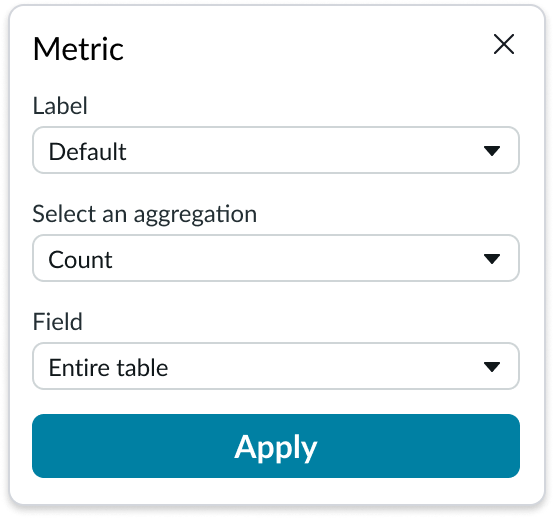
Metric label position
You can show or hide the metric label for basic and advanced simple charts. The label for advanced charts can only appear at the top of the chart. However, you can place the label at the top or the bottom of basic simple charts.

Header and border
The component header displays in the top left and contains the title and a description that appears when the user hovers over the information icon. You create the header and then show or hide it with the controls provided. By default, the header is configured to show, but the content is empty. You can also show or hide a bordering box around the chart.
Header background color
By default, the color of the header background is neutral-0 (white). You can specify a different color (including a custom color) for the background.
Select a color for the visualization header background that aligns with your dashboard theme, branding, or design preferences. The color you choose applies only to the visualization header background.
For better accessibility, make sure a good color contrast exists between the header background and title text. The minimum contrast requirement for normal text is 4.5:1, and for large text is 3:1. To verify, check the contrast ratio in the color picker.
Note: Theming is not supported when you select a custom color.
Chart title
By default, the chart title is blank, but you can add a title. When you add a title for your chart, you’re able to customize the color and make it wrap.
Title color
By default, the title text is neutral-21 (black). You can select a different color (including a custom color) for the title text.
You should select a color for the chart title that aligns with your dashboard theme, branding, or design preferences. The color you choose applies only to the chart title.
For better accessibility, make sure a good color contrast exists between the header background and title text. The minimum contrast requirement for normal text is 4.5:1, and for large text is 3:1. To verify, check the contrast ratio in the color picker.
Note: Theming is not supported when you select a custom color.
Filters
You can configure data visualization to allow the use of individual chart filters and allow a chart to use the filters set on that workspace page. Filters set on the data source always run on the component. The “Follow filter” property, which is set to “true” by default, applies any filters set on the workspace page in addition to those set on the data source. Setting the “Follow filter” option to “false” prevents any filter input from the workspace page.
Data drilldown
You can configure the chart to enable users to drill down into data directly by selecting the score. This enables users to view data such as records and record lists from data tables or KPI data from indicators.
Score updates
You can configure a single score chart generated from table data to update the score in real time, at a refresh interval you define, or at a predefined automatic interval. Real time settings are only available when the metric aggregation setting for the table is “Count.” In addition, you can configure the chart to display the time of the latest update. Update settings are only available for some indicator data sources. For more information see “Single score visualizations” in the product documentation.
Trend indicator
By default, a single score chart that uses an indicator data source displays the change in the value over time and the percentage of that change. An arrow icon indicates the direction of the trend. You can configure the chart to show or hide the change value and the percentage.
Target values
You can configure the single score chart to show or hide a target value and the gap between the actual score and the target, expressed as a percentage. The target and gap percentage are enabled by default. These properties are only available for Performance Analytics indicators.
Sparkline
A sparkline is a small data visualization subcomponent that measures values over time in the form of a simple area chart. A sparkline doesn’t have an x or y axis or grid lines. If you configure the target attribute to show, the target is represented by a line on the sparkline graph.
Note: A sparkline chart is only available for Performance Analytics indicators and appears by default below the score.

Presentation properties
The presentation properties control the physical appearance of the chart. Use these properties to control how your users consume the data.
Chart border
You can show or hide a bordering box around the chart.
Show zero
For basic single score visualizations, when you use the table data source type you can choose to display zero “0” instead of "no data" for an empty state. This is typically used for metric "count" of records when no data and zero “0” have the same meaning.
Score size
Configure the display size of the score in your single score chart. The size you use depends on the type of single score, the surrounding content, and how prominent you want the score to appear. Avoid using large score values that expand beyond the container width and truncate. Instead, adjust the font size so the score fits in the space available. The choices are Auto, XS, S, M, L, XL, and XXL. The default size is medium (M). Auto is a responsive size based upon the size of the widget and other single score properties enabled.
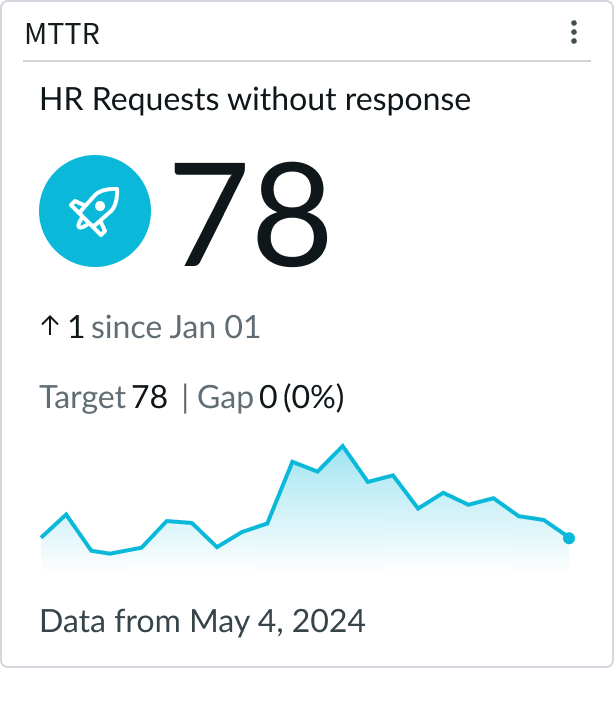
In this example, the score in a single score chart is displayed in the large (lg) size.
Sparkline style
When you choose to dispay the sparkline chart, by default, it is displayed as a line with the area between its points and the horizontal axis colored in. If you prefer, you can display the sparkline a line without the colored in part.
Note: A sparkline chart is only available for Performance Analytics indicators and appears by default below the score.
Score color
You can configure the score color for all charts or define a color rule that changes the color based on conditions you define. For charts that use Performance Analytics indicators as the data source, the "Default" color of the score is determined by the value of the score compared to the target.
Score icon
You can select an icon that displays on the left of the score value.
Icon style
When the score icon you choose has a background, you can have the color applied to either the background or to the icon itself. Otherwise, the color is applied to the icon.
Colors
You can customize the colors used for your single score visualization. For the single color selection, a color picker provides a list of predefined colors in a dropdown list for the chart color and the icon color. Color selection options differ slightly, depending on the visualization selected.
Color rules
Charts using a table as a data source enable you to create color rules for different values. You can add multiple rules to apply different colors to different value ranges.
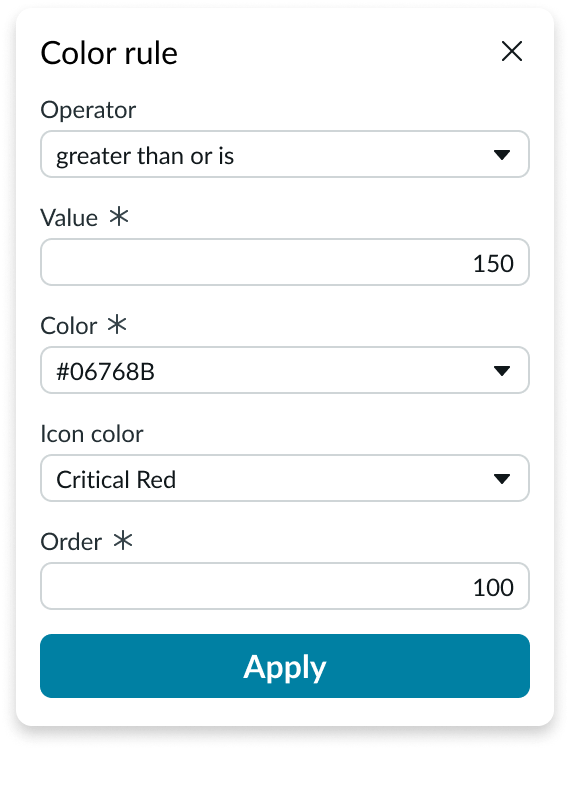
In this example, the rule displays the icon in red when open incidents reach a certain threshold.

Design recommendations
Learn how to apply single score in your design.
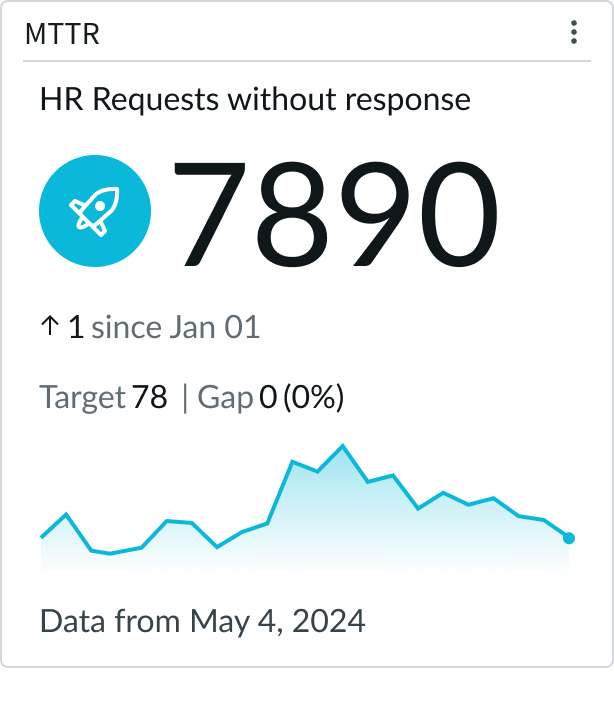
Proper sizing of score and score icon with respect to widget size
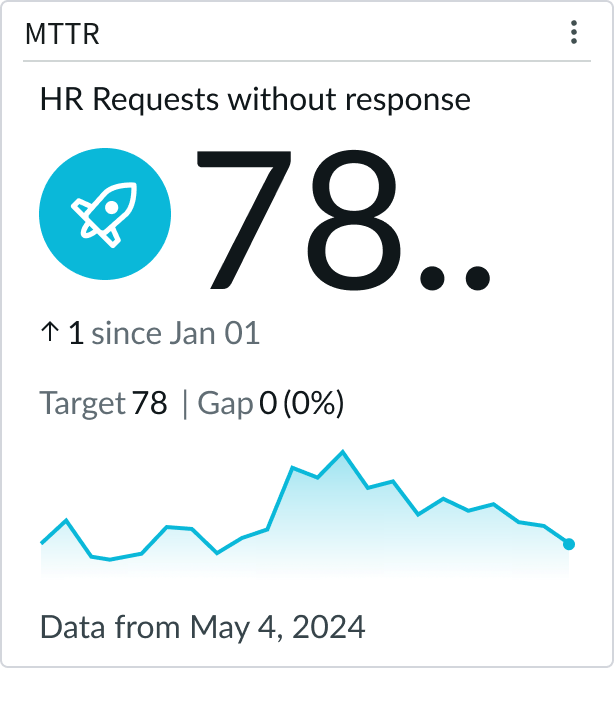
Incompatible sizes of score and icon with respect to the widget size
UI text guidelines
These are some recommendations for using text within single score:
- Avoid using long labels that expand beyond the container width. Labels don’t wrap and will truncate.
- Adjust the font size of the score so it fits in the space available. Large numbers don’t wrap and will truncate.
Behavior
Learn how single score behaves when the display changes or a user interacts with the component.
Truncation
Scores or labels that extend beyond the content slots or container don’t wrap and will truncate with an ellipsis. If any of the chart values in a content slot truncates, a tooltip shows the complete value on hover.
User interaction
When you configure data drilldown, users can open records directly from single score by selecting the score.
Usability
Single score complies with all internationalization and accessibility requirements.
Internationalization
When a basic single score chart is internationalized to a right-to-left (RTL) language, the chart contents align on the right of the container.

If there is a sparkline in the chart, the trendline retains its left-to-right direction.
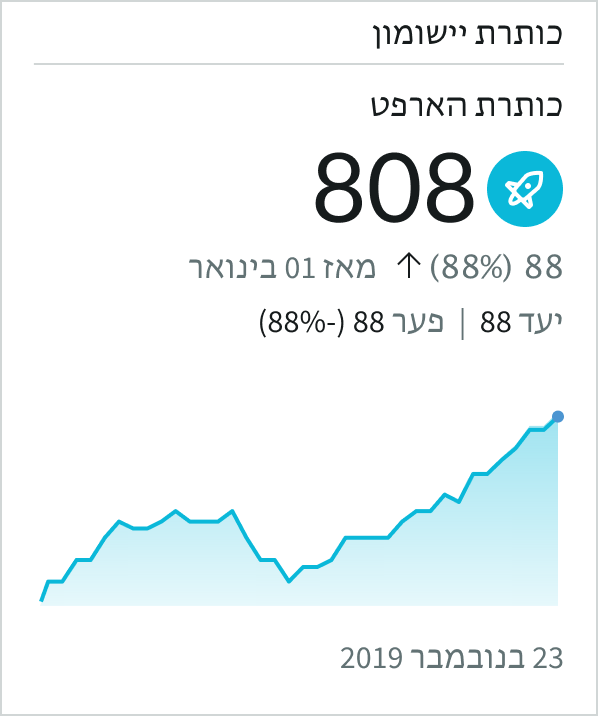
Accessibility
Learn how to access the actionable elements of single score through keyboard interactions and screen readers.
Visual
Consider applying a sharp contrast (like a neutral gray fill) to the sparkline to make the chart accessible to all users.
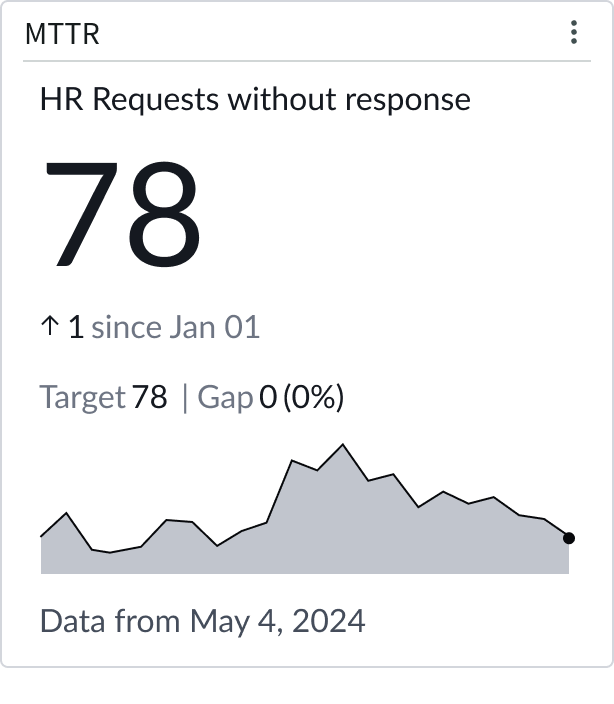
Keyboard interactions
Users can access the chart navigator with these keyboard keys:
- Tab: Moves focus through each handle in the chart navigator
- Arrow up, down, right, left: Moves the handles that control the zoom feature in the chart navigator
Screen readers
When you apply ARIA labels to a component, screen readers announce the controls and content of single score in the prescribed tab order.
Screen readers read the data in the following order:
- Timestamp
- Score
- Trend Change
- Snapshot
- Target
- Gap


